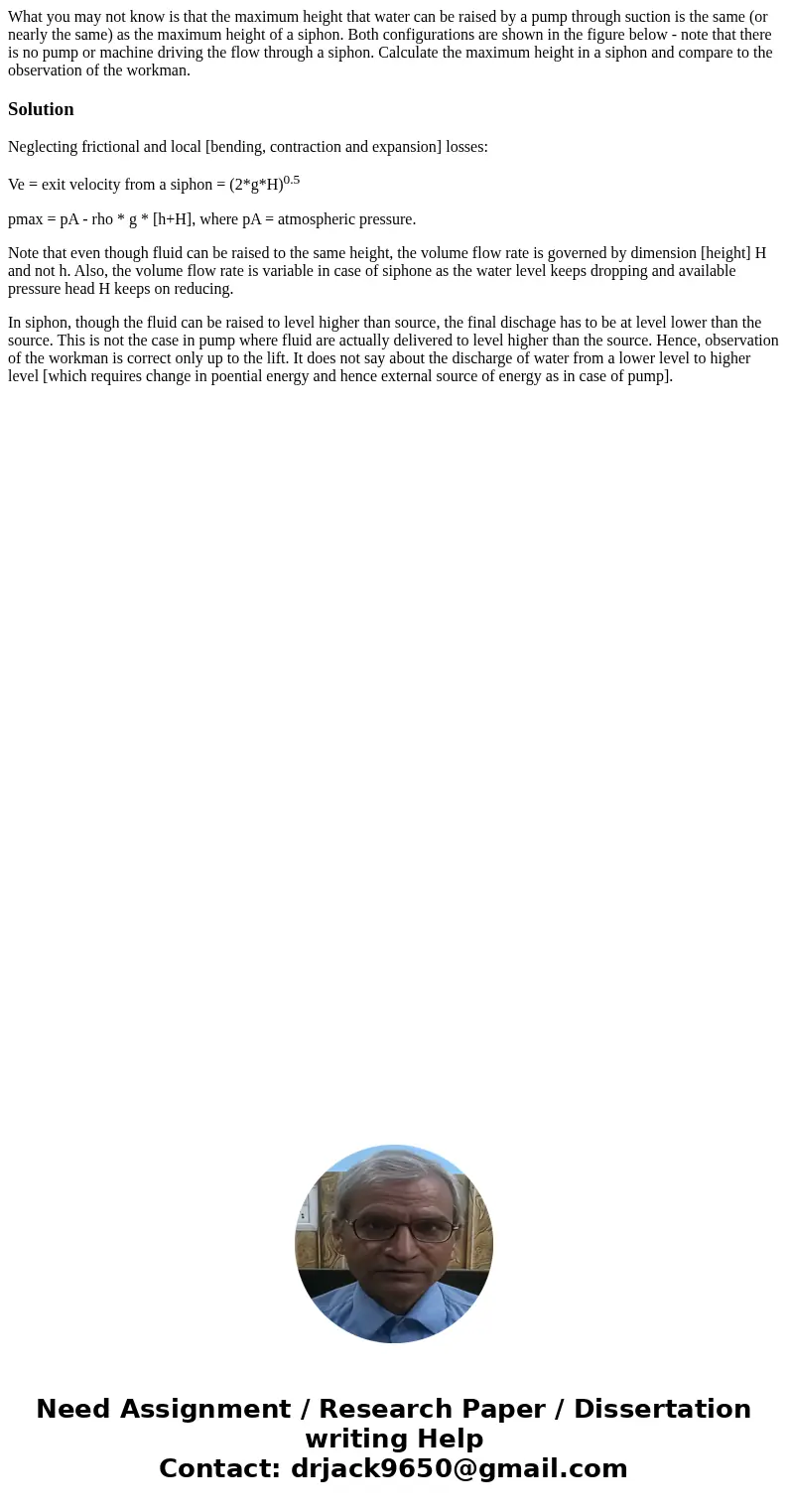What you may not know is that the maximum height that water
Solution
Neglecting frictional and local [bending, contraction and expansion] losses:
Ve = exit velocity from a siphon = (2*g*H)0.5
pmax = pA - rho * g * [h+H], where pA = atmospheric pressure.
Note that even though fluid can be raised to the same height, the volume flow rate is governed by dimension [height] H and not h. Also, the volume flow rate is variable in case of siphone as the water level keeps dropping and available pressure head H keeps on reducing.
In siphon, though the fluid can be raised to level higher than source, the final dischage has to be at level lower than the source. This is not the case in pump where fluid are actually delivered to level higher than the source. Hence, observation of the workman is correct only up to the lift. It does not say about the discharge of water from a lower level to higher level [which requires change in poential energy and hence external source of energy as in case of pump].

 Homework Sourse
Homework Sourse